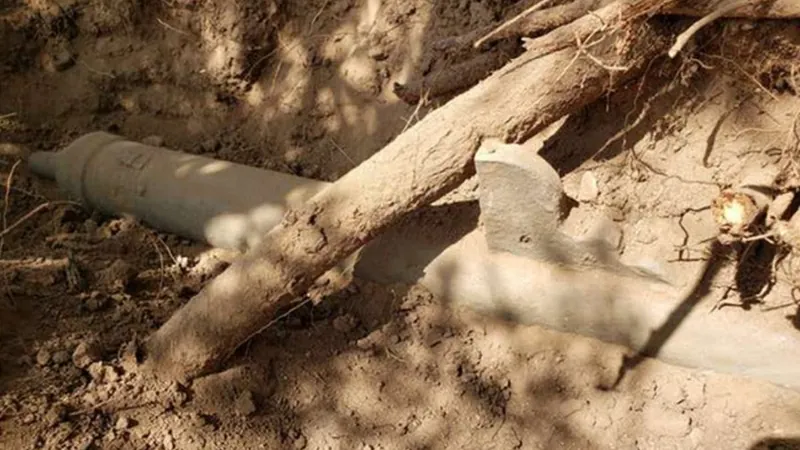
Unbelievable Discovery: The Oldest Gun in the U.S. Uncovered After 480 Years!
2024-11-26
Author: Ken Lee
In a remarkable archaeological find, researchers in Arizona have announced the discovery of the oldest known gun in the continental United States, dating back nearly 500 years. This bronze cannon, known as a wall gun, was uncovered during excavations at the site of San Geronimo III, the first European settlement in the Southwest, established in 1540.
The groundbreaking discovery took place within a Spanish stone-and-adobe building near the Santa Cruz River and was confirmed through advanced carbon dating methods. This cannon, which has remained in situ for centuries, offers critical insight into early European settlements and military efforts in the region.
The study, published in the International Journal of Historical Archaeology, reveals that the wall gun's design aligns with weaponry from the mid-to-late 1400s, indicating it was already outdated by the time of the Spanish expedition. Remarkably, the researchers reported that the cannon appears to have never been fired, likely abandoned during a surprise attack by the indigenous Sobaipuri O'odham people, who successfully repelled the Spaniards from the area.
This event marked the earliest significant uprising by Native Americans against European incursions in what is now the United States, leading to a 150-year absence of Spanish presence in southern Arizona. The discovery of a wide array of artifacts, including arrowheads and lead bullets, further contextualizes this pivotal conflict and its implications for indigenous resistance against colonization.
Adding historical depth, the expedition led by conquistador Francisco Vázquez de Coronado in 1540 aimed to find riches and suitable routes to Asia. However, it ended in disappointment as the Spaniards failed to locate gold or silver and faced fierce resistance from the Native populations. The town of San Geronimo III was ultimately decimated, forcing the remaining inhabitants to flee.
Experts stress that the wall gun’s lightweight and portable design made it suitable for transportation, allowing it to be easily carried on horseback. However, its pristine condition – devoid of any residue inside the barrel – suggests it was never fired during the chaotic assault. Historians suggest that the gun's absence from action may reflect the Spaniards’ unexpected predicament, as they were ill-prepared for the swift attack that morning.
Now, 480 years later, the cannon, along with another recently discovered piece, opens a window into a turbulent era of early American history. Researchers are eager to examine the second cannon, which promises to further illuminate the complex narrative of colonial encounters in the Americas. With such discoveries, the past becomes more tangible and offers newfound perspectives on the interactions between Native Americans and European settlers.
This extraordinary find is not just a testament to the archaeological significance of the region but also a reminder of the resilience and agency of Native American communities during the early colonial period. The ongoing investigations at the San Geronimo III site are bound to reshape our understanding of this transformative chapter in American history.



 Brasil (PT)
Brasil (PT)
 Canada (EN)
Canada (EN)
 Chile (ES)
Chile (ES)
 España (ES)
España (ES)
 France (FR)
France (FR)
 Hong Kong (EN)
Hong Kong (EN)
 Italia (IT)
Italia (IT)
 日本 (JA)
日本 (JA)
 Magyarország (HU)
Magyarország (HU)
 Norge (NO)
Norge (NO)
 Polska (PL)
Polska (PL)
 Schweiz (DE)
Schweiz (DE)
 Singapore (EN)
Singapore (EN)
 Sverige (SV)
Sverige (SV)
 Suomi (FI)
Suomi (FI)
 Türkiye (TR)
Türkiye (TR)